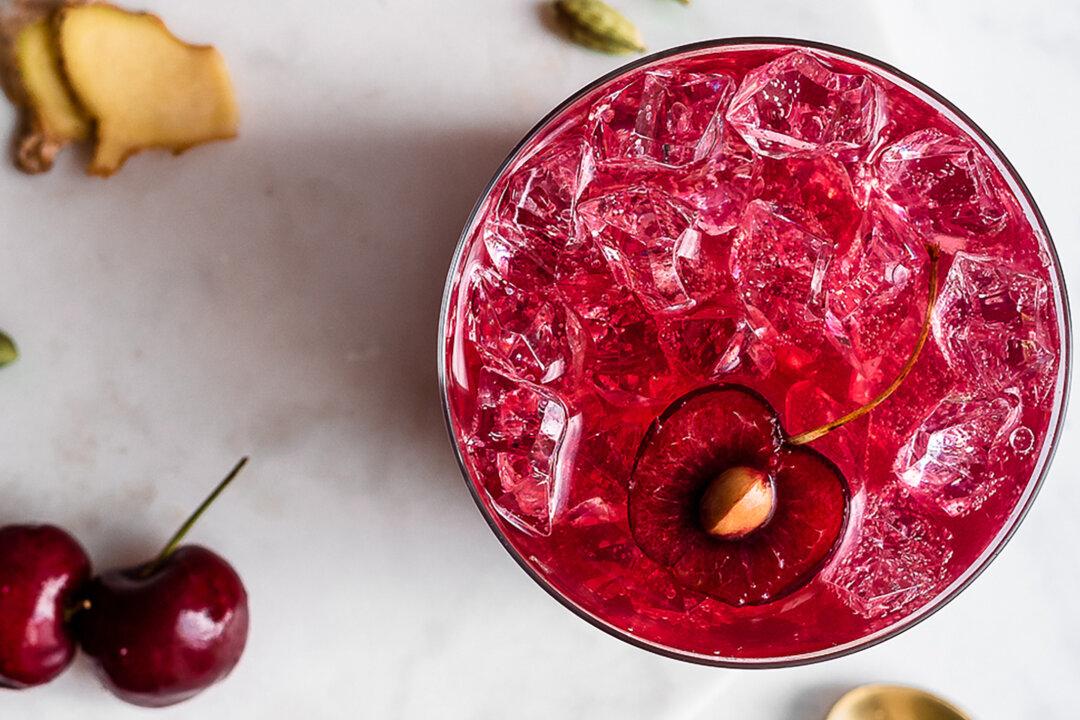As summer heat settles in, you'll crave something cold and crisp in your glass, preferably without a side of artificial flavors. Before neon sports drinks and super-sweet bottled teas crowded store shelves, people used simpler ways to hydrate. Think fruit, herbs, vinegar, and a little sugar or honey.
Cordials
Before bottled teas and energy drinks became summertime staples, people reached for cordials. They’re a sort of concentrated syrup made from fruit, sugar, and sometimes herbs. Cordials first appeared in the 15th century. They were sweet, boozy blends of herbs, fruit, sugar, and spices that doubled as medicinal tonics. Renaissance-era physicians prescribed cordials to lift the spirits, reinvigorate the body, and, often, as aphrodisiacs.
Over time, cordials evolved from medicinal tonics into sweet, herb- and fruit-infused syrups. Perfect for preserving summer fruits and herbs, they were typically made at home in small batches. Elderflower is a classic, with its delicate blossoms steeped alongside lemon. Stone fruit and berries also make lovely cordials. The process is simple: fruit, sugar, water, a few herbs, and a little patience.
Shrubs and Drinking Vinegars
Shrubs are fruit-and-vinegar syrups loosely related to medicinal cordials and tonics. By the late 18th century, they had transcended the realm of medicinal tonic and become popular soft drinks. These sharp, sweet-sour drinks offered a clever way to preserve fruit before refrigeration. Vinegar acted as a natural preservative, while sugar softened its acidity.To make a shrub, first muddle the fruit and any herbs with sugar until it becomes soft and syrupy. Stir in raw vinegar and transfer the mixture to a clean jar. Apple cider vinegar is the most common choice, but other culinary vinegars work well, too. Let it steep in a cool, dark cupboard for a week or two. Shake the jar gently each day. This process helps the flavors come together and prevents the raw vinegar from forming a mother biofilm.

After about a week or two, the infused vinegar will be ready. Its flavor should taste sour but also vibrant with fruit and herbs. Strain out the solids and add a sweetener such as honey or sugar. Finally, bottle the resulting syrup and store it in the cupboard away from direct light and heat. To serve, swirl a spoonful into still or sparkling water.
Lemonade
Few drinks say “summer” like a tall glass of lemonade or limeade. These citrusy staples offer refreshment with minimal fuss: just juice, water, and something sweet. Making it at home is easier than you think, and the flavor of the real stuff surpasses anything you can buy at the store.
Lemonade likely comes from ancient Egypt. There, people mixed lemon juice with dates and water to stay cool in the desert heat. In 17th-century Europe, street vendors sold a honey-sweetened lemonade in the streets. By the 19th century in the United States, it had become a picnic and porch swing classic.
To make your own, start by preparing a simple syrup. Mix equal parts water and your sweetener of choice. Heat them together gently until the sweetener fully dissolves in the water. Let it cool completely. Stir it into fresh-squeezed lemon juice. Then add enough water to dilute the concentrated syrup to your liking. For a twist, muddle in fresh fruit or toss in herbs such as basil or lemon balm to brighten things up.

Iced Tea
Store-bought versions of iced tea often come loaded with high-fructose corn syrup and preservatives. You can skip junky additives and brew it at home instead. You can tweak the flavor of your homemade version. Pick your favorite tea, add a natural sweetener if you like, and finish it with fresh herbs or a splash of citrus.
Start by brewing your tea a bit stronger than usual, since it will be diluted with ice. Black tea is the go-to for traditional sweet tea, but green tea and herbal blends also work well. Let it steep, then cool to room temperature before transferring to the fridge. If you like it sweet, stir in honey or sugar while it’s still warm so it dissolves completely.
Once it’s chilled, brighten things up with fresh herbs such as mint or lemon verbena, slices of citrus, or a few muddled berries. Serve it over ice or pour it into a pitcher to share.






